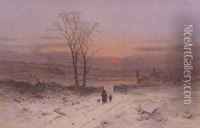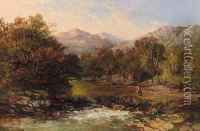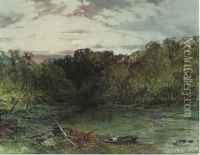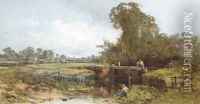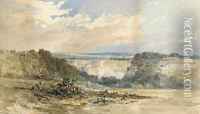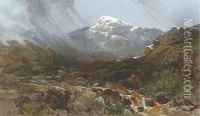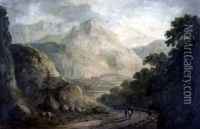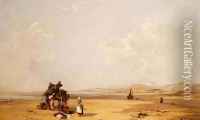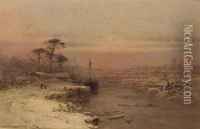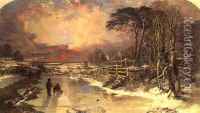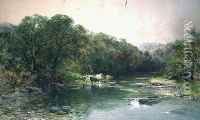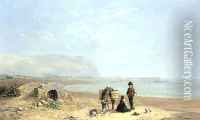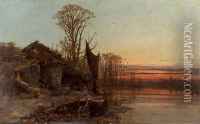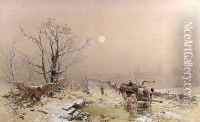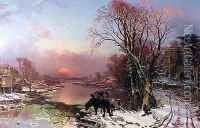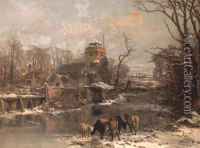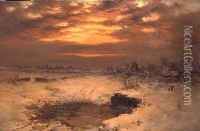Charles Branwhite Paintings
Charles Branwhite was a British painter born in Bristol in 1817. He was the son of Nathan Cooper Branwhite, a miniaturist and engraver, which meant that Charles was exposed to the world of art from a young age. Branwhite was primarily known for his landscape paintings, often depicting scenes with a particular emphasis on the effects of snow.
Branwhite's education in the arts began under the guidance of his father and was later influenced by his travels and studies. He developed his skills in capturing the nuances of the natural environment, which became a hallmark of his work. He was particularly adept at painting winter landscapes, a subject that earned him considerable acclaim during his lifetime.
During the 19th century, the appreciation for landscape painting was on the rise, and Branwhite's contributions were well-received. He exhibited his works at various prestigious institutions, including the Royal Academy and the British Institution. His paintings often featured the countryside of England and Wales, with a focus on the serene and quieter aspects of nature.
Branwhite's ability to render the chilly atmosphere of winter scenes with a delicate and realistic touch resonated with Victorian audiences. His works are characterized by a fine attention to detail and a muted but effective use of color to convey the coldness and stillness of winter.
Despite his success, Charles Branwhite has not maintained the same level of recognition as some of his contemporaries. Nevertheless, his paintings remain a testament to his talent and his contribution to the British landscape painting tradition. Charles Branwhite passed away in 1880, leaving behind a body of work that continues to be appreciated by those with an interest in Victorian art and the depiction of the British landscape.
